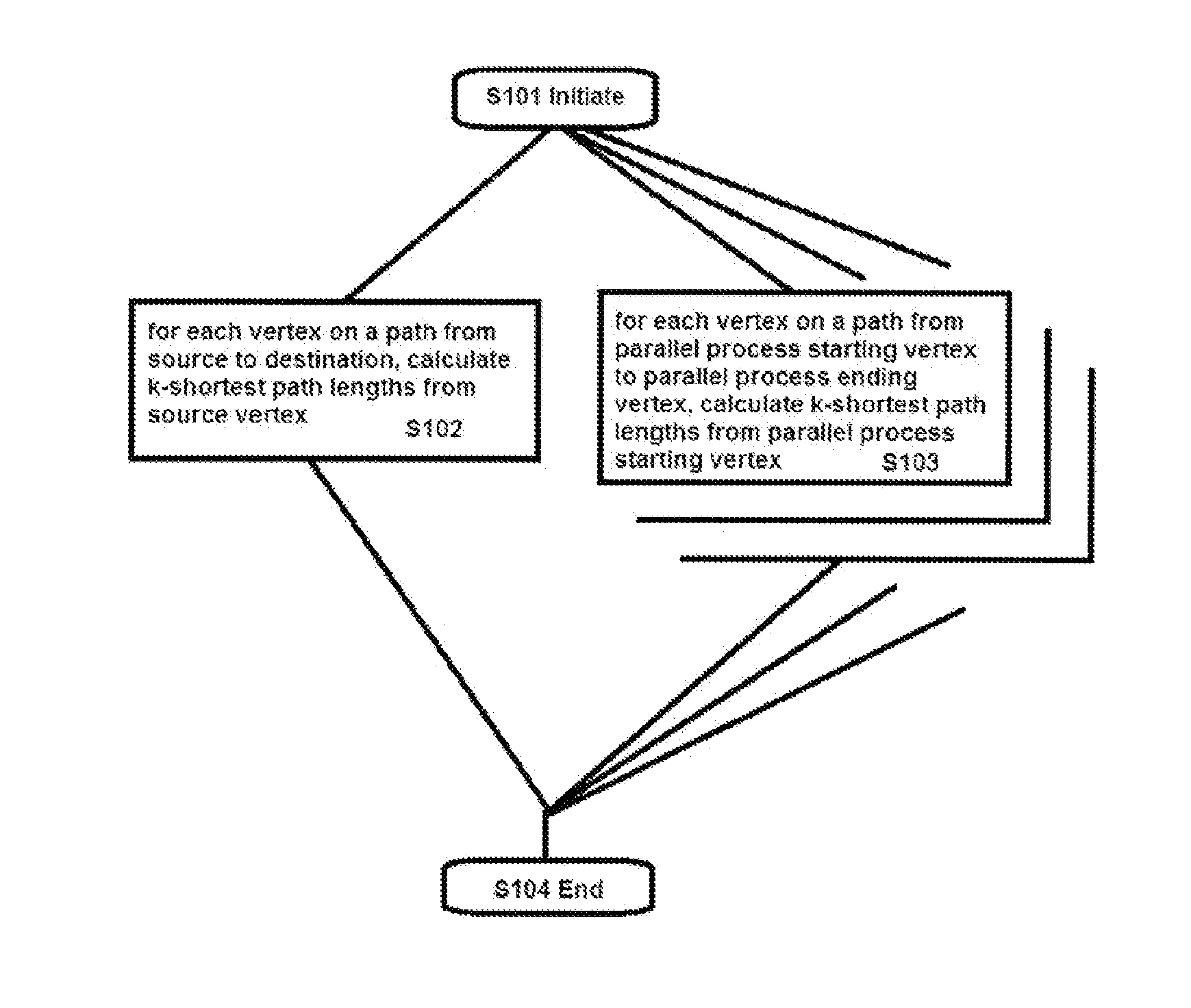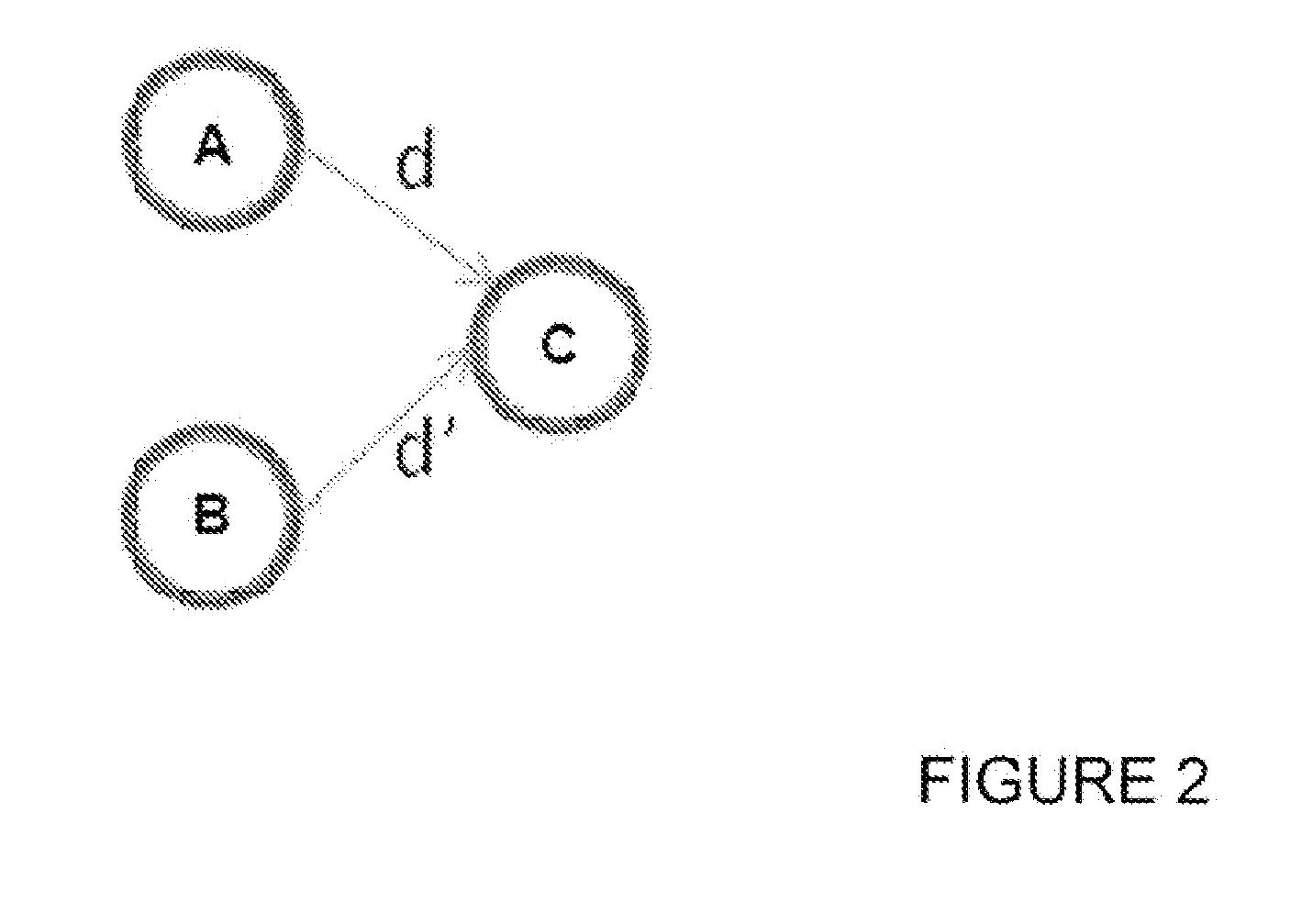Computer-implemented k-shortest path finding method
a technology of shortest path and computer implementation, which is applied in the field of graph database algorithm and processing method, can solve the problems of difficult parallelization, unsatisfactory or available shortest path, and inability to find the most useful operation, etc., and achieves quick query, convenient comparison, and quick update
- Summary
- Abstract
- Description
- Claims
- Application Information
AI Technical Summary
Benefits of technology
Problems solved by technology
Method used
Image
Examples
Embodiment Construction
[0043]Reference will now be made in detail to the embodiments, examples of which are illustrated in the accompanying drawings, wherein like reference numerals refer to the like elements throughout. The embodiments are described below to explain the present invention by referring to the figures.
[0044]FIG. 1 is a flow chart representing a method embodying the present invention. In an approximate sense, time increases from top to bottom, so step S101 is performed first, then steps S102 and S103 are performed at least partially in parallel, and then step S104 is the end of the method.
[0045]At step S101 the method is initiated. The method may be started in response to a request or instruction from an application or some other entity capable of instructing processing to be carried out on the stored data graph. For example, the database controller may receive a query for the k shortest paths from a first vertex to a second vertex. The initiation step S101 may also include, from the source ...
PUM
 Login to View More
Login to View More Abstract
Description
Claims
Application Information
 Login to View More
Login to View More - R&D
- Intellectual Property
- Life Sciences
- Materials
- Tech Scout
- Unparalleled Data Quality
- Higher Quality Content
- 60% Fewer Hallucinations
Browse by: Latest US Patents, China's latest patents, Technical Efficacy Thesaurus, Application Domain, Technology Topic, Popular Technical Reports.
© 2025 PatSnap. All rights reserved.Legal|Privacy policy|Modern Slavery Act Transparency Statement|Sitemap|About US| Contact US: help@patsnap.com



